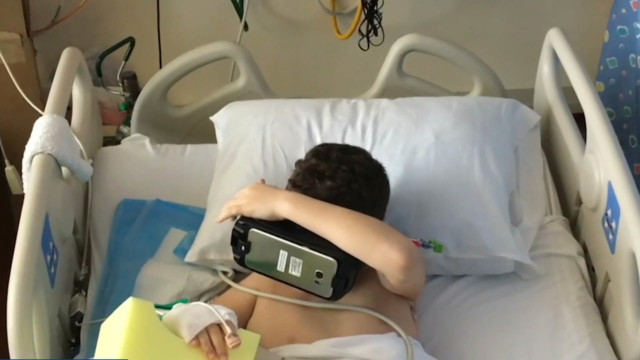There’s no easy cure-all for managing pain and treating trauma patients. But in today’s digital age, doctors and technologists believe immersive and mobile technologies hold great promise.
CGTN’s Mark Niu reports.
Beth Rogozinkski has in her hand something that could soon become the first digital therapeutic for mental and behavioral health approved as a medical device by the U.S. government. It’s called reSET, an app for substance abuse patients. When faced with a craving, a patient can describe how they’re feeling, get drug refusal advice, or even earn rewards like free coffee or store discounts.
Developer Pear Therapeutics is also working on an app for schizophrenics and virtual reality programs that help post-traumatic stress disorder patients re-experience trauma in a safe environment. That’s a concept being studied at Stanford Medicine’s Virtual Reality Clinic.
Neuropsychiatrist Dr. Kim Bullock uses virtual reality to help deal with patient fears like preparing for an MRI test or dealing with phobias. Bullock also treats patients with debilitating conditions like cerebral palsy and multiple sclerosis and those with chronic pain-using a VR form of mirror therapy that tricks the brain into stimulating weaker limbs.
“The amount and how dramatically and how quickly within one session they can have relief is just mind boggling to me. And I have people that are needing less medication, and how much less has to be determined, but I think it’s a great non-pharmacological way. If we can add this other layer where there might be permanent changes that can occur, I think it really adds to pain management options,” Dr. Bullock said.
At Stanford’s Lucile Packard Children’s Hospital, hundreds of children are using virtual reality for anxiety and pain reduction.
Nine-year-old Blaine was in a Go-Kart accident that tore the skin from his arm, making it extremely painful to change his dressings. Pediatric anesthesiologist Dr. Thomas Caruso said, “We have seen a reduction in the medicine called Midazolam which is given to patients to help reduce anxiety pre-operatively. And with respect to pain, when you distract someone from a painful experience they subjectively report less pain.”
Dr. Caruso said so far there are no complaints at all from patients using the immersive technology and that – although they’re quickly expanding the program – they’re having trouble keeping up with all the patient requests to wear a VR headset.
Walter Greenleaf on virtual reality tech’s increasing clinical role
CGTN’s Mark Niu spoke to Walter Greenleaf, chief scientist at Pear Therapeutics to find out how clinical VR has developed and how its used today.
 CGTN America
CGTN America

